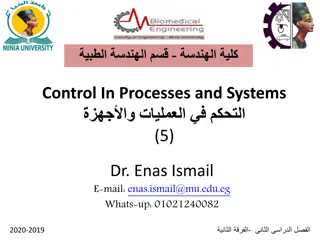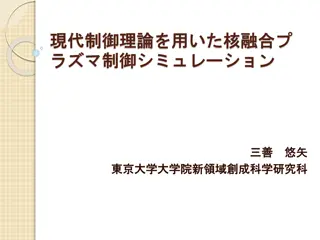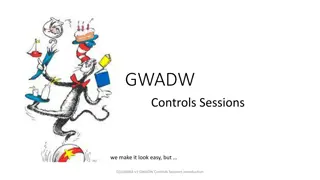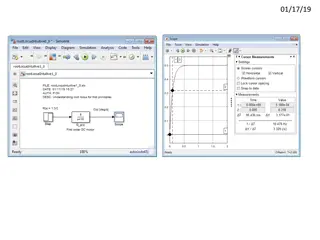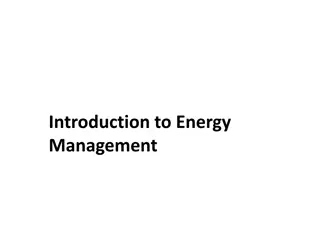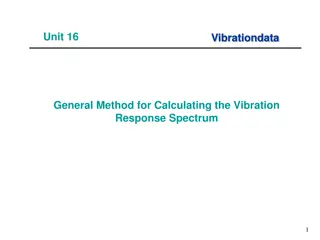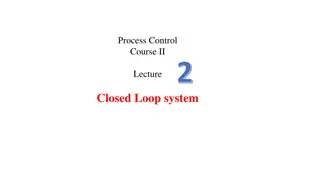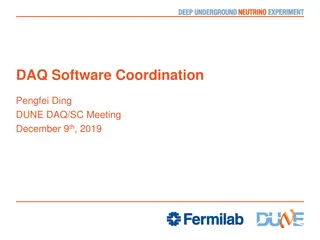Understanding Control Systems for Desired System Response
A control system is an interconnection of components that regulate, direct, or command a system's response. It consists of plant, feedback, controller, and error detector components. The plant is the unit to be controlled, feedback allows automatic correction, the error detector compares inputs, and the controller generates control signals. Two types of control systems are open-loop and closed-loop systems, each with unique characteristics and functions.
Download Presentation

Please find below an Image/Link to download the presentation.
The content on the website is provided AS IS for your information and personal use only. It may not be sold, licensed, or shared on other websites without obtaining consent from the author. Download presentation by click this link. If you encounter any issues during the download, it is possible that the publisher has removed the file from their server.
E N D
Presentation Transcript
Control Systems A control system is an interconnection of components forming a system configuration that will provide a desired system response. The meaning of control is to regulate or to direct or to command and therefore, a control system is an arrangement of distinct physical components connected in such a manner so as to regulate or to direct or to direct or to command itself or some other system.
The basic components of a control system Plant Feedback Controller Error detector
components Plant: The portion of a system which is to be controlled or regulated is called as plant or process. It is a unit where actual processing is performed and if we observe in the above figure, the input of the plant is the controlled signal generated by a controller. A plant performs necessary actions on a controlled system and produces the desired output. Feedback: It is a controlled action in which the output is sampled and a proportional signal is given to the input for automatic correction of any changes in the desired output. The output is given as feedback to the input for correction i.e. information about output is given to input for correcting the changes in output due to disturbances. The feedback signal is fed to the error detector. Negative feedback is preferred as it results in better stability and accuracy. The other disturbance signals are rejected.
Error detector: The function of error detector is to compare the reference input with the feedback signal. It produces an error signal which is a difference of two inputs which are reference signal and a feedback signal. The error signal is fed to the controller for necessary controlled action. This error signal is used to correct the output if there is a deviation from the desired value. Controller: the element of a system within itself or external to the system which controls the plant is called as a controller. The error signal will be a weak signal and so it has to be amplified and then modified for better control action. In most of the systems, the controller itself amplifies the error signal and integrates or differentiates to generate a control signal. An amplifier is used to amplify the error signals and the controller modifies the error signal.
Types of Control Systems Control systems is of two types. Open Loop System Closed Loop Sytem
Open loop control system Any physical system which does not automatically correct the variation in its output,is called an open loop system or control system in which the output quantity has no effect upon the input quantity are called open-loop control system.This means that the output is not fedback to the input for correction. In open loop control system the output can be varied byvarying the input.But due to external disturbances the system output may change.When the output changes due to disturbances,it is not followed by changes in input to correct the output.In open loop systems the changes in output are corrected by changing the input manually.
Closed loop control system Control systems in which the output has an effect upon the input quantity in order to maintain the desired output value are called closed loop systems.
The open loop system can be modified as closed loop system by providing a feedback.The provision of feedback automatically corrects the changes in output due to disturbances.Hence the closed loop system is also called automatic control system.The general block diagram of an automatic control system is shown in figure below.It consists of an error detector,a controller,plant (open loop system) and feedback path elements.
Advantages of Open loop control system The open loop systems are simple and economical. The open loop systems are easier to construct. Generally the open loop sytems are stable. Disadvantages of open loop systems The open loop systems are inaccurate and unreliable. The changes in the output due to external disturbances are not corrected automatically.
Advantages of closed loop systems The closed loop systems are accurate. The closed loop systems are accurate even in the presence of non-linearities. The sensitivity of the systems may be made small to make the system more stable. The closed loop systems are less affected by noise. Disadvantages of closed loop systems The closed loop systems are complex and costly. The feedback in closed loop system may lead to oscillatory response. The feedback reduces the overall gain of the system. Stability is a major problem in closed loop system and more care is needed to design a stable closed loop system.













